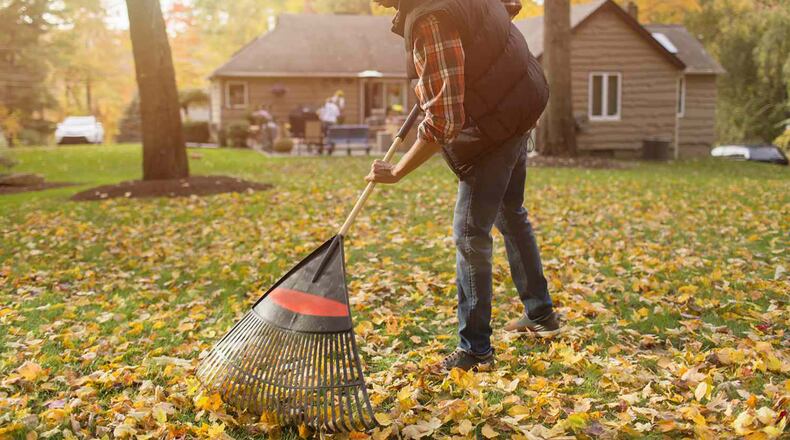As winter approaches in the Southwest Ohio area, gardeners are preparing for the first hard frost. While some know exactly how to handle this, others have questions about pruning, mulching and even raking those fallen leaves.
“It’s a good thing to mow those leaves and mulch them up,” Stockslager said. “Even mowing over them adds nutrients back to the soil and it’s a benefit you don’t get if they go to the landfill.”
Stockslager and his two siblings quite literally grew up in the greenhouse, learning about plants and how to care for them. All three — including Scott Stockslager and Vicki Stockslager Bussard — are still involved in the business.
Over the years, Duke Stockslager has learned how it feels to have your hands in the soil and create a garden that will bring pleasure during the summer months and for years to come.
Over the past few months, Ohio has been suffering from a severe drought, which is changing the way gardens and yards should be prepared for the upcoming frost and snow.
“We are still very dry right now,” Stockslager said. “We had a lot of rain from Hurricane Helene, but it continues to be dry.”
Any shrubs or trees that have been planted over the past three years need to be watered regularly. A trickle of water around the plants will soak in and benefit the plants.
“Depending upon the rains we get throughout the rest of the fall, it will be important to do this a time or two before we get frozen ground,” Stockslager said. “This is critical to help them survive the winter.”
For those flower beds that have been the source of beauty and pride all summer, Stockslager cleans them up before they are buried under fallen leaves.
And who hasn’t been confused by when and how to prune? Stockslager insists that as long as gardeners wait until the leaves are no longer green and the plants have stopped flowering, pruning can be done anytime.
“Extremely large rose bushes are the exception,” he said. “A heavy snow or ice load could break them so go ahead and prune them as soon as possible.
Gardeners have also been shopping for spring flowering bulbs, which must be planted in the fall because they need a cold dormant period in order to flower.
“The ground is hard now, but you can go ahead and purchase bulbs and store them in a cool place like the garage and once the rains come and soften the ground, you can drop them in,” Stockslager said.
If gardeners prefer bark mulch over composting or dead leaves, this also helps keep moisture around the root ball. Fall flowering Chrysanthemums (also known simply as mums) can be protected with mulch that will keep them from heaving up out of frozen ground. This will ensure they will flower again next fall.
“Folks can’t over winter mums because they don’t get established first,” Stockslager said. “Once they die, leave them there then wait until spring to cut them back to the ground. Then pull the mulch away and pinch back until July 4.”
One of the showiest flowering plants in our local area is the hydrangea — with its many large flower heads in assorted colors. The ins and outs of pruning these can be confusing, but Stockslager said most newer varieties are “ever blooming.”
“I have already cut mine down and removed the dead heads because ice and snow can damage them,” Stockslager said. “If you prune them back now, it won’t hurt them. This goes also for Rose of Sharon.”
Credit: Getty Images/iStockphoto
Credit: Getty Images/iStockphoto
Struggling with dead patches in your lawn after months of drought? Stockslager said it’s too late for fall grass seed planting, which ideally should be done before the first week in October.
“Fall seeding is the best time,” he said. “But winter seeding can be done in February or March and it’s the second-best time.”
Vegetable gardens should be cleaned up and all dead matter removed, which will help carry any diseases out of the garden. Crops like tomatoes and green beans should be rotated so they can take advantage of soil nutrients.
“In June, July and August, we sit back and enjoy the beauty of our hard work,” Stockslager said. “Now’s the time when work begins again. So we’ll have the same beauty next year.”
About the Author





